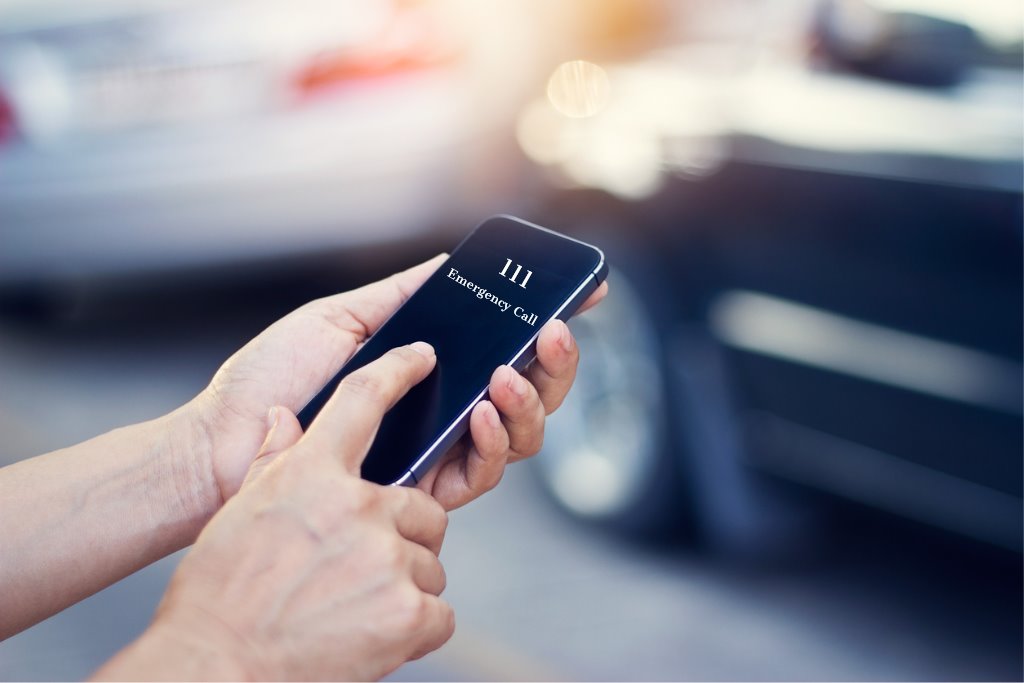APPRECIATING 111 CALL TAKERS BY FOLLOWING BEST PRACTICES FOR EMERGENCY CALLS
September 03, 2018 at 10:00 AM

This blog is intended to provide us all with a chance to appreciate the unsung heroes who serve our communities answering and dispatching 111 calls. These call takers work in stressful environments and are often verbally abused by those making 111 calls who are the very people they are trying to help. Despite this they get up each day and go to work so that they are there to answer the phone when we need them the most. They along with the bystander providing first aid at the scene are an integral part of the chain of survival required to save a life.
Origin of 111
The telephone exchange in Masterton was replaced in 1956, and was the first exchange to have the technology installed for the 111 service. Hence Masterton and nearby Carterton were the first towns in the country to get the new service.
The 111 service began on 29 September 1958 in the two towns. When a subscriber dialled 111 at either exchange, the call was routed by the automatic exchange onto one of three dedicated lines to the toll switchboard at the Masterton exchange (although the exchange connected calls automatically, long-distance (toll) calls still had to be connected manually through an operator).
Dedicated lines connected the toll switchboard to the Masterton police station, fire brigade, and the hospital, where they were connected to a special red telephone. The line connected to the fire station, when it rang, also sounded the station alarm bells. A similar arrangement was employed at the police station, while at the hospital the call went to the local switchboard where it was identified by a red light and a distinctive bell.
Among the first 111 calls was a call for an ambulance after an accident at a sawmill, and a call to the fire service after a rubbish tip fire in Carterton. The first hoax call also occurred on the first day – a caller dialled 111 to ask for the address for a Carterton hotel.
In 2017 emergency services operators were receiving an estimated 1300 calls every day for genuine medical emergencies throughout New Zealand. These calls are received by three dedicated emergency communication centres located in Auckland, Wellington and Christchurch.
Calling 111: Best Practices
When you call 111, an EMS dispatcher with specialised training will answer the call. The dispatcher will ask for basic information, which service do you require (Fire, Police or Ambulance?), the location of the incident, the number and conditions of those who are ill or injured and what care is being provided. Answer the dispatcher’s questions as clearly as possible, and only hang up if directed to do so by the dispatcher. Use the speaker function of your phone if available so you can talk to the EMS operator and treat your patient at the same time.
When to call: An emergency is any serious situation where a law enforcement officer, fire fighter or emergency medical help is needed right away. If you are unsure of whether your situation is an emergency, go ahead and call 111.
If you call 111 by mistake, do not hang up the phone: Stay on the line until you can tell the call-taker that you called by accident and there is no emergency. This saves the call-taker from having to call you back and confirm there is no emergency, or possibly sending police to check your address for an emergency.
Do your best to stay calm and answer all questions: The questions 111 call takers ask, no matter how irrelevant they seem, are important in helping get the first responders to you as fast as possible.
Know the location of the emergency: The mobile phone 111 caller must be aware that the 111 centre that answers the call may not be the 111 centre that services the area that the mobile wireless caller is calling from.
If you are on the move give street, road, bridge names or other geographical landmarks as reference points.
If you're at home, it will be easier to give the emergency services operator the right information if you've written it down beforehand on your home emergency action plan. Make sure you, your visitors or children can quickly provide:
- phone number
- street address
- suburb
- town/district
- RAPID number (available to rural residents from local authorities).
It's critical in an emergency to accurately describe how emergency services can find you. They don't always know where you are, especially if you're calling from a mobile phone.
Teach your children how to call 111: Be sure they know what 111 is, how to dial from your home and cell phone and to trust the 111 call-taker. Make sure your child is physically able to reach at least one phone in your home. When calling 111 your child needs to know their name, parent’s name, telephone number and, most importantly, their address. Be sure all members of your household are aware that prank or harassing calls to 111 will be dealt with by local law enforcement agencies.
To all the 111 call-takers, thank you for all you do to help make our workplaces and communities safer.
Sources

![]()
https://en.wikipedia.org/wiki/111_(emergency_telephone_number)



